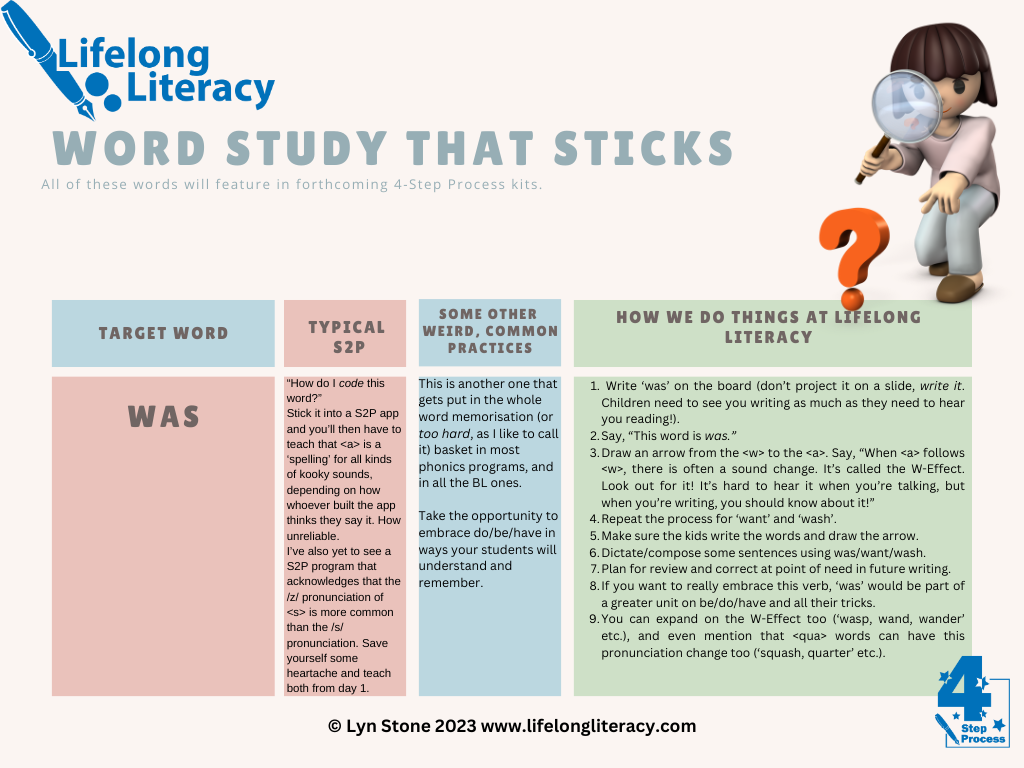Today’s Speech to Print and other dubious practices solution centres around the word ‘was’. Since my first article on the S2P movement, there have been a great number of comments from S2P practitioners along the lines of ‘Oh we absolutely teach morphology and etymology…after second grade/after the initial code/CCVCC’ etc.
When I ask: Why wait? The inevitable answer is:
‘Because they couldn’t possibly decode/encode something as complex as a base and an affix!’
Really?
Let’s take four common prefixes and four common suffixes in English:
un-
re-
dis-
sub-
-s
-ing
-ed
-er
Notice anything about their internal structure? That’s right. There’s not one more complex than CVC. And you can attach all of them to one-syllable bases:
unfit
recap
dislike
subway
dogs
helping
landed
kinder
Because they couldn’t possibly grapple with something as grammatically complex as the denotation of an affix?
Are you sure about that?
Because it’s well known that by 30 months of age, typically developing children start to understand and produce complex syntactic and grammatical structures in spoken language (see any speech pathology developmental milestones kit).
That’s a good few years of practice and development before they hit school. Why keep this information back? And besides, teach prefixes before you teach suffixes. My Morphology Masterclass shows you exactly how.
Morphology aside, we can also use easily understood frameworks to help us with the spelling of so-called irregular words. A word like ‘was’ is a doddle when you apply a framework and put it in a family.
Don’t forget that ‘be/do/have’ and their forms are the most common words in the English language. They tell the story of the written as well as the spoken language, and are so common that your students are bound to get lots of terrific practice and exposure orally and in writing. Why hold back and teach them as if they’re ‘tricky’? They’re not tricky! They’re fabulous! As well as denoting the three main categories of human experience (being/doing/having), they act as auxiliary verbs, helping main verbs to express all the nuance that tense gives us. Lastly, look at your materials on contractions, like don’t, they’re, it’s, could’ve. What do you notice? That’s right, be/do/have again! Embrace these gorgeous verbs and their forms and do it sooner rather than later.
